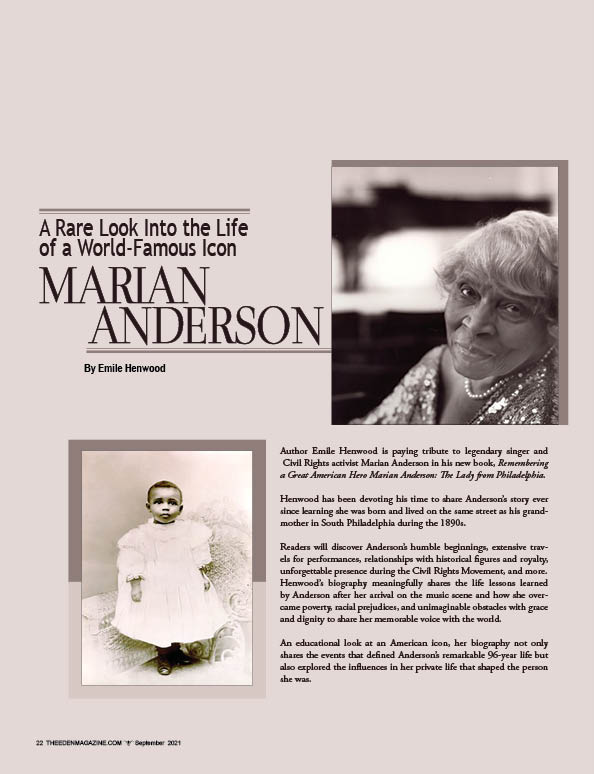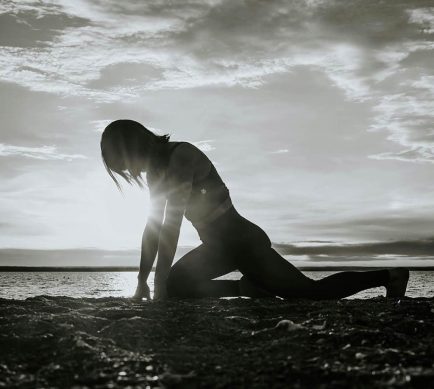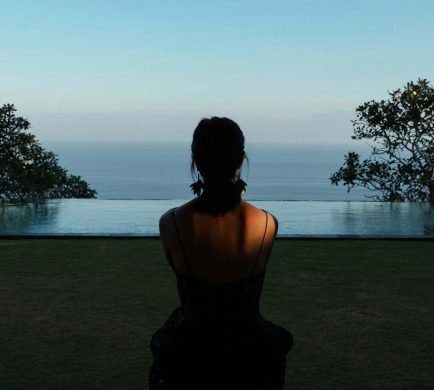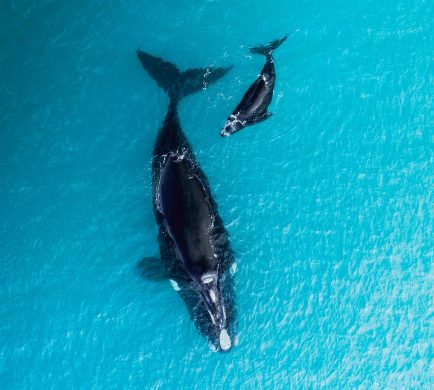By Emile Henwood
Author Emile Henwood is paying tribute to legendary singer and Civil Rights activist Marian Anderson in his new book, Remembering a Great American Hero Marian Anderson: The Lady from Philadelphia. Henwood has been devoting his time to share Anderson’s story ever since learning she was born and lived on the same street as his grandmother in South Philadelphia during the 1890s.
Readers will discover Anderson’s humble beginnings, extensive travels for performances, relationships with historical figures and royalty, unforgettable presence during the Civil Rights Movement, and more. Henwood’s biography meaningfully shares the life lessons learned by Anderson after her arrival on the music scene and how she overcame poverty, racial prejudices, and unimaginable obstacles with grace and dignity to share her memorable voice with the world.
An educational look at an American icon, her biography not only shares the events that defined Anderson’s remarkable 96-year life but also explored the influences in her private life that shaped the person she was.
She was one of the most significant Philadelphians of the 20th Century and whose name was a household word throughout the country that has almost been forgotten today – Marian Anderson.
Those few people who live their entire lives in a virtuous exemplary manner need to be remembered by future generations. Fr. Butler’s “Lives of the Saints” is a good start, but it should not end there, nor with one Christian denomination. Propriety, modesty, and gratitude were Anderson’s family traits passed on by Mrs. Anderson to Marian and her two sisters. To that, Marian added humility anchored in faith and gratitude for her gifts. Arrogance was inconceivable. Marian Anderson never felt that her successes were hers alone; rather, they were primarily God’s doing. The goal of this work is to enshrine the life lessons to be learned from this iconic trailblazing humanitarian who overcame poverty, racial prejudices, and obstacles unimaginable today with grace and dignity.
Marian Anderson’s historic open-air Lincoln Memorial Solo Concert took place on Easter Sunday, April 9, 1939. It is well documented by the mass media and in books by noted historians. Walter White, the head of the NAACP, was the true architect of this event. The president of Howard University was concerned about a potential Ku Klux Klan disruption as the Nation’s Capital had always been the KKK’s favorite rally destination. Many threats of violence and safety concerns caused Marian to call her manager, Sol Hurok, at midnight the night before the concert, wanting to cancel.
In a nutshell: Following three unsuccessful attempts over two years by Howard University, early in the year, Sol Hurok was also unsuccessfully trying to book Constitution Hall for a Washington, DC, concert due to their “white performers only” policy, brought on by Jim Crow laws and Washington, DC’s, segregation customs. The Daughters of the American Revolution owned constitution Hall. Public outrage resulted. Eleanor Roosevelt and several hundred other DAR members resigned in protest. Ultimately, largely due to Eleanor Roosevelt’s influence, this led to Marian Anderson’s outdoor Easter Sunday solo concert on the steps of the Lincoln Memorial, in front of 75,000 people and millions on national radio. This was the largest crowd ever at that point on the National Mall since a smaller KKK rally fourteen years earlier. There was a very heavy police presence. Historians now recognize this peaceful protest event as the true beginning of the modern Civil Rights era.
Historians have overlooked that event that a bright and impressionable ten-year-old boy named Martin Luther King Jr. was in the audience, carefully listening. Twenty-four years later, in 1963, when he delivered his historic I Have a Dream speech, Dr. King quoted the lyrics from Marian’s entire opening song in 1939, “America” (“My country, ’tis of thee, sweet land of liberty”… etc.) on those same sacred steps, where he and his dear friend and mentor, Marian, made history again in 1963.
Circling back to April 15, 1947, when Jackie Robinson became the player who shattered racial barriers as he integrated baseball. Before he could swing a bat in the major leagues or even step onto the field, he had to be signed by someone who believed in equality, who believed that it wasn’t right for America’s sport to be divided by the color of its players’ skin.
This man was Branch Rickey, an executive of the Brooklyn Dodgers who initiated integration’s “noble experiment.” Rickey’s search for “the right man” officially began in 1943 when the Dodgers’ management gave him the go-ahead. It wasn’t long after then when Rickey and Hurok (a Brooklyn native and Dodgers fan) discovered a common denominator, in what Sol Hurok had been building and learning as Marian Anderson’s manager since 1935, that served as a readymade springboard for Rickey’s noble experiment—using Hurok’s success managing Marian Anderson’s professional career as a stepping-stone for success in Sol Hurok’s new additional role as Jackie Robinson’s baseball agent.
Undoubtedly, Hurok and Anderson’s close friendship and professional relationship was a significant factor as they mentored Robinson, transforming his behavior from resentment of his persecutors to one of showing grace and dignity in the face of persecution. They quietly changed Jackie into a person, the Marian Anderson of Sports. The three remained close for the rest of their lives.
Those of us who remember Marian Anderson as simply a great singer, as I once did, are missing 90% of what this trailblazing humanitarian really accomplished. Few of her many biographers were able to focus on the entire ninety-six years of her entire life, so they mostly presented her from their particular academic, historical, or musical points of view. This book is a condensed chronological compilation from several authors, historians, and eyewitnesses connecting the dots between significant events throughout Marian Anderson’s entire life to this day. By design, readers can complete this book in one or two sittings, hopefully stimulating further research and examples from her virtuous, brave life to pass on to future generations.
This short article is only a taste of the Anderson Fairy Tale. The author realizes there are many “Baby Boomers” who had personal interactions with Marian Anderson that will be shared in a sequel. Kindly contact Emile Henwood with your story on his blog via email at author@emilehenwood.com.







